Southern T ides
all about the water












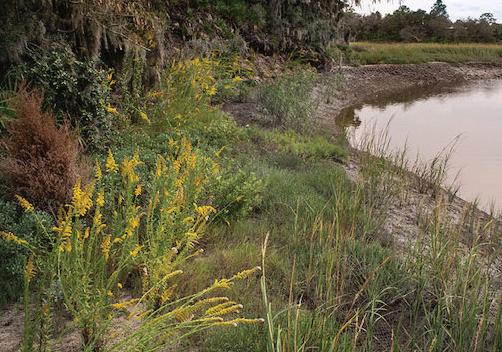







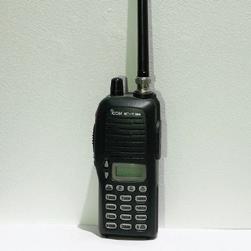





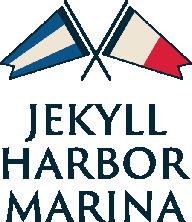



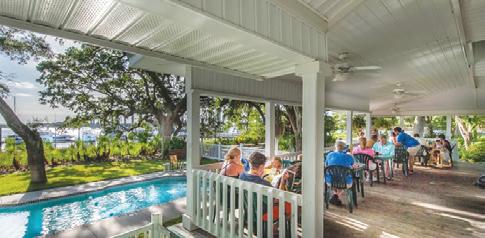
Sometimes in life you just have to go for it. Ignore the naysayers. Overcome the challenges. Defy the odds.
I was reminded of that while working on this month’s feature article, Celebrating CSC (pages 1213). When a handful of sailors, Leo Peloquin, Chris Weaver, Mike Reynolds, Chris Davis, and I, talked about starting a new sailing club in 2009, we ran up against some challenges.
For one thing, none of us knew the first thing about starting a non-profit. We’d all belonged to various sailing clubs over the years, even served on the boards or worked as paid staff at other organizations, but starting one from scratch was as sticky as a tube of 5200.

Then, as we talked about it in the community, we were told sailing was dead in Savannah and that the area didn’t need another sailing club and that even if we got a club off the ground, participation would be low.


One driving factor in starting something new was that we recognized the need for a land-based location where members could congregate and spend time together, as well as a launching point for events on the water. But we didn’t own the property we hoped to base it from and we knew that could put the club in a tenuous position.
In addition, starting something like this would take funding and none of us could afford to dump a bunch of money into it. And lastly, we all had our own jobs or businesses to run and knew this would be time-consuming.
What did we have going for us? Determination. And the belief that we could create something that would be beneficial to the community.

So we did it. We figured it out as we went along, we asked experts for guidance, we drummed up enthusiasm in the community, we leapt over hurdles or knocked them down, and we did it.
And 14 years later, Chatham Sailing Club is active and thriving. CSC has been hosting events, teaching people to sail, and providing a sense of community and camaraderie, all these years. If we, the founding five of CSC, had listened to the naysayers or given up when faced with challenges, the club wouldn’t exist.
I say all this not to brag about what we accomplished, but to remind us all – myself and all of you reading this –that sometimes, you just have to go for it. Don’t listen to the naysayers (not even the internal ones), don’t shy away from challenges or obstacles, ignore the odds, and make something happen. Build something great. Do something new. Color outside the lines. Be bold!
Yes, you’ll no doubt make mistakes, but nothing has ever been accomplished without mistakes along the way. Yes, you might fail, but with failure comes experience and you’ll know what to do differently on your next effort. If you never even try, you’ll never know what you might accomplish. Go for it!
See you out there!
Amy Thurman Editor in Chief amy@southerntidesmagazine.com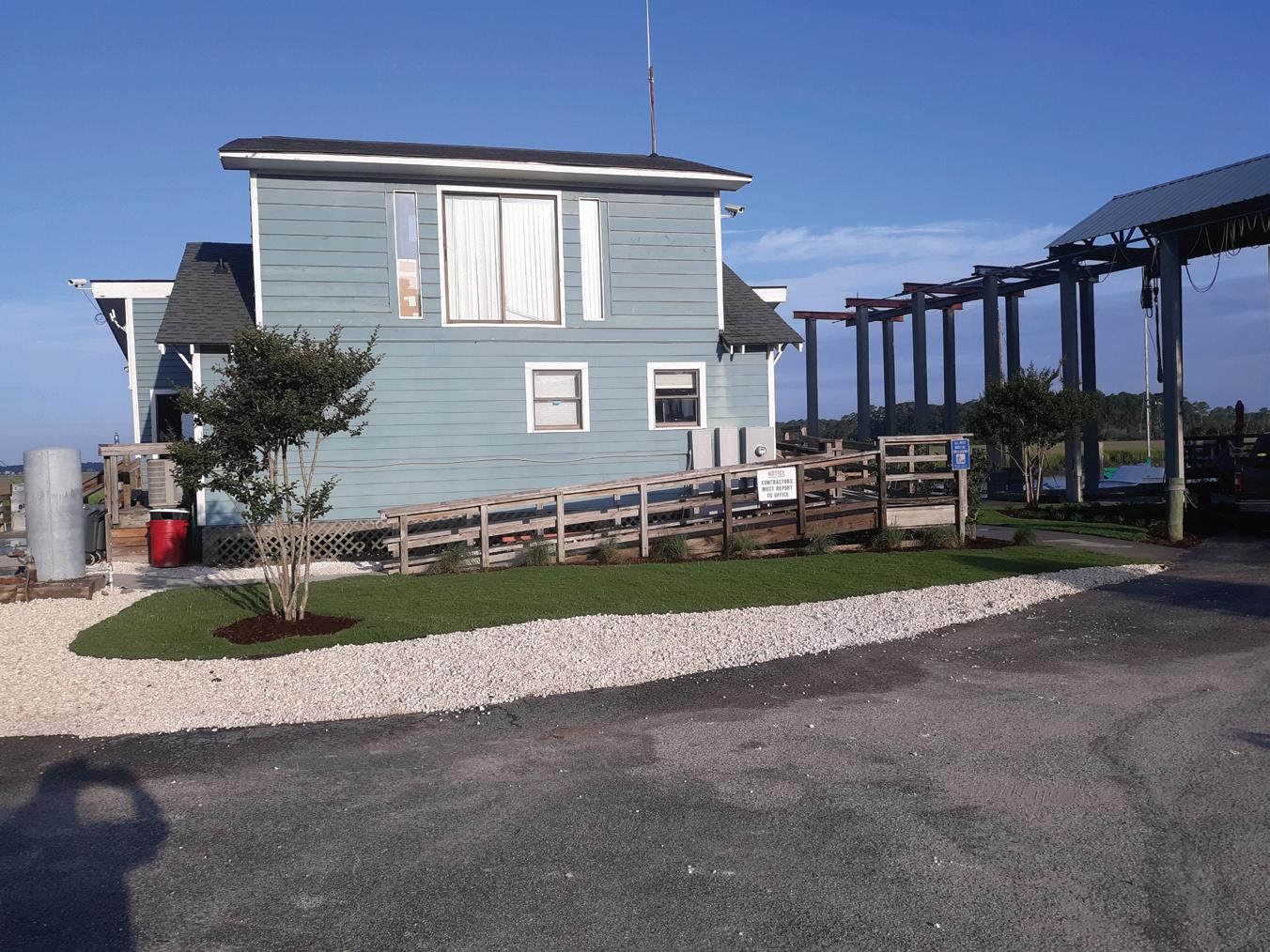


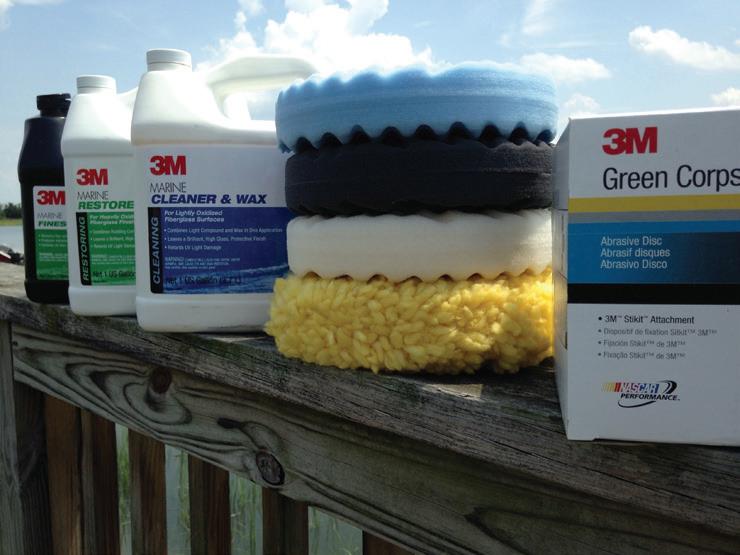
Spending time on the water is one of our favorite pastimes here on the Georgia coast, whether it’s aboard your own boat, a friend’s boat, a rented boat, or a personal watercraft (PWC) such as a jet ski, a kayak, or SUP. We love being on the water.
Keeping yourself, your passengers and your vessel safe is paramount, whether you’ve been on the water your entire life or you just moved to town, whether you’re going out for the whole day or just an hour or two. While this article is mostly geared towards newbies, many of us who know better make mistakes too. Consider this a refresher. How many times have you gone out to fish or kayak for an hour or two and didn’t tell anyone where you were going? I know I'm guilty of that.
Check the weather and tides
Summer weather in Georgia is an ever-changing thing. You can check the weather in the morning and see afternoon storms forecasted only to see non-stop sunshine all day. Or you can check the weather and see non-stop sunshine all day only to be caught in a pop-up thunderstorm. But you still have to check, and you still have to keep a close eye on the skies while out.
Tides are critical here too, especially if your previous experience is on a lake or an area with a low tidal range. It isn’t just the 9- to 11-foot tides we can experience, but the incredibly fast current that goes along with them. Plan your outings accordingly – don’t get stuck in the mud on a low tide in your boat, and don’t wear yourself out paddling and have to return against the wind and current.

The bottom line: understand and accept that you are at the mercy of weather and tides.
Tell a friend
All the safety gurus like to call this “filing a float plan” which sounds all official and possibly complicated, but the point of a float plan is that someone on land knows where you should be if anything goes wrong and a search party needs to be called out to find you. Even if you’re only running down the river to check your crab trap, tell someone a) where you’re going, and b) how long you plan to be gone. What if a sudden storm blows in (which happens almost daily in the summer) and you’re hit by lightning? What if you have a medical emergency and can’t get your boat back to the dock? Tell someone when and where you’re going.
The laws are pretty clear about what’s required from a safety standpoint – check the list out here: gadnrle.org/requiredequipment. Although not required, a VHF radio is an excellent investment from a safety standpoint. “Mayday, mayday, mayday,” over channel 16 is a whole lot faster than scrolling through your contacts trying to figure out who to call when
you’re out in the sound or on a back river and get into trouble, since it could be heard by nearby boaters. A whistle or an air horn is also a great (and cheap) safety tool. Five or more blasts is a signal for danger or impending danger. Another useful tool that’s not always required is a distress flag, which can be used on any vessel in trouble, even an SUP, and can be easily carried in a pocket. A small waterproof case to store your phone and VHF radio in is also a great idea. With any of these, it’s always better to have it and not need it, than to need it and not have it.
If you take anyone along with you, spend a few minutes going over important information. How to get on and off the boat safely (especially from the water), what not to touch, how/when it’s safe to move around while underway, where safety gear is and how to use it, how to use the radio to call for help, how to tell someone where you are if they have to call for help, how to start the boat, put it in gear and turn it off in case of emergency. Ask if they can swim and if not, put them in a life jacket. Everyone under 12 must wear a life jacket. You are responsible for every person on your vessel – take it seriously.
If you’re a passenger and the boat owner doesn’t do these things, ask. If the boat owner tells you to do something, do it and ask questions later. If you don’t have confidence in their ability to keep you safe, stay home.
Dolphins have a pretty cool skill – they can doze with only half their brains asleep, while the other half remains alert to dangers. So make like a dolphin and while you’re watching your line in the water, that dolphin jumping off the bow, that great blue heron staring at you from the bank, and all that glorious scenery, keep one eye open, and part of your brain alert to what else is going on around you. Other vessels in the area, the skies, the tides, the wind, what time it is, wildlife that might take an interest in you, what’s going on with your vessel, even your own body. Pay attention, keep your head on a swivel, be alert.
Time on the water is the very best part of living on our stretch of coast. Let’s keep it that way and be safe out there.









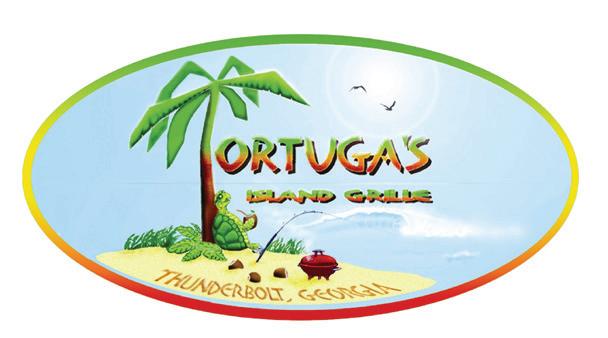

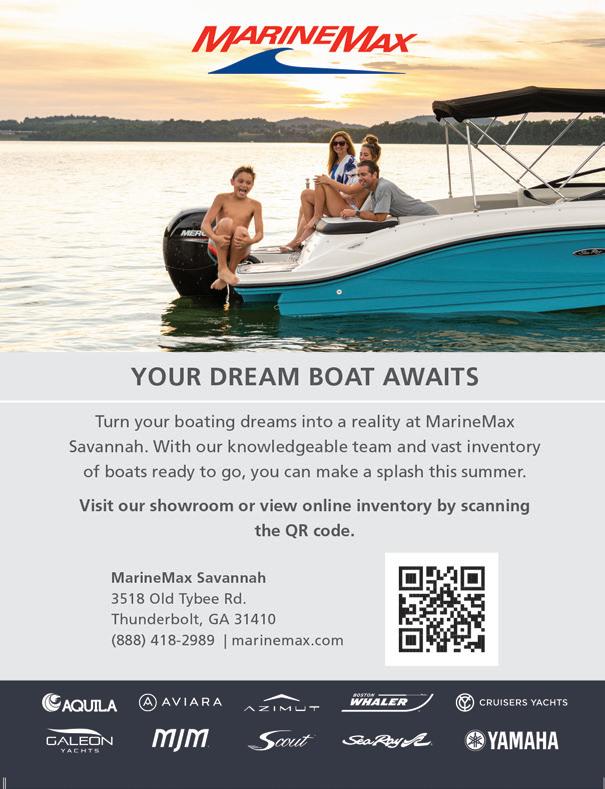
2 cups smoked fish, deboned and flaked
1 cup cream cheese, softened to room temp
1 - 3 tbsp sour cream (or olive oil mayo)
½ cup finely diced jalapenos (or bell pepper or celery)
½ cup finely diced red onion
2 tsp Old Bay Seasoning

Dash of Worcestershire sauce
Cracked black pepper
Optional: capers, lemon zest, finely diced cilantro

When it's hot outside, cold food is just the thing. This is a summertime favorite for a light lunch or an appetizer. Our favorite smoked fish is Spanish mackerel, but most any fish you throw on the smoker will work. Don't forget to support your local seafood markets or catch it yourself!
• In a food processor, combine cream cheese, vegetables, Old Bay and Worcestershire until well-blended.
• Add smoked fish and pulse until well-blended
• Transfer mixture to a glass or plastic bowl and stir in sour cream (or mayo) by the tablespoon until slightly softer texture is achieved.
• Add cracked pepper to taste
• Chill for at least one hour to allow flavors to blend before serving.
• Garnish with cilantro or lemon zest, serve capers on the side if desired. Great with toasted baguette slices or crackers.

Once upon a time, a small group of sailors got together and decided to “adjust the sails” of the Savannah sailing community. At that time, there were only a handful of sailing organizations in Savannah and events were few and far between, leaving those with a passion for sailing – and socializing with other sailors – wanting something more.
And so, in the fall of 2009, local sailors Leo Peloquin, Chris Weaver, Chris Davis, Mike Reynolds, and Amy Thurman set out to create something new, and Chatham Sailing Club was launched that October. They met weekly, settled on the name, wrote up by-laws and articles of incorporation, established a board of directors, set membership levels, and came up with a burgee design.
That first board of directors was Peloquin as Commodore, Weaver as Vice-Commodore, Reynolds as Race Commodore, Davis as Cruising Commodore, and Thurman as Yeoman (secretary/treasurer). Positions and names would change a bit that first year, but Chatham Sailing Club had a foundation. Their goals were simple but lofty: to create an inclusive and affordable club open to anyone who loved sailing or wanted to learn, to provide a venue for land-based social events as well as racing and cruising activities, and to support other sailing organizations in the community and beyond.
In January 2010, less than three months after their first meeting to discuss forming a new sailing club, CSC hosted its first event – an oyster roast and membership drive with over 40 people in attendance (in spite of it being 22 degrees out) and resulted in the membership rising from seven to over 30. In February, the club participated in the sailing program at the Savannah Boat Show, and the following month, in March, hosted its first sailing event – a poker run, with eleven boats participating. Later that year, CSC co-hosted the Savannah Cup with the Charleston Ocean Racing Association. It was an eventful first year with regular member events, participation in the events of other sailing organizations, and a lot of growth. And that was just a foreshadowing of what was to come.
In the years since, the club has grown both in membership and in the activities they host and support.
CSC now hosts the Hook Race, from Hilton Head to Savannah, this year will mark ten years hosting the Oktoberfest Regatta, and they now host a frostbite series each winter, other races and regattas throughout the year, as well as raftups and cruising events. In addition, the club hosts sailing classes throughout the year and social events, such as Friday Sundowners.
In those first months of existence, the club leased a piece of land with a dock on Wilmington Island. Peloquin brought in a porta-potty, sundowners were held on the dock, meetings were held in military officer’s tent provided by an active duty military member, and a fire pit, chairs, and other supplies
were donated by members. Peloquin, a builder by trade, drew up plans for a clubhouse, but with the club’s small budget, it seemed to be a distant dream.
Within a year’s time, the club moved next door to Young’s Marina, which provided bathroom facilities, discounted dockage for club members, an open air deck for gatherings and occasional use of the marina clubhouse. The board negotiated a five-year lease at a rate of $100 per month. “Bada bing, bada boom!” as Peloquin was known for saying!
Still, CSC members longed for a clubhouse of their own that could be open to members, used to host parties, store club property, and be a permanent “home.”
In 2011, that dream finally began to take shape. Peloquin found a house in Midway the owner wanted torn down and removed, and he negotiated an agreement – club members would dismantle the house and relocate the materials to Young’s, which would then be used to construct a clubhouse. The original house, a 1970s A-frame built of western red cedar, was dismantled and moved in three months’ time, and the project came to be called “The Battle of Midway.” The cedar was used for interior finishing and exterior siding, and other necessary items were salvaged from the community or purchased by members. The doors were officially opened in 2013.
This month, Chatham Sailing Club will host a party to celebrate the 10th anniversary of its clubhouse, on Friday, June 23, at 7:00 p.m. Rumor has it that several of the original founding members will be in attendance!
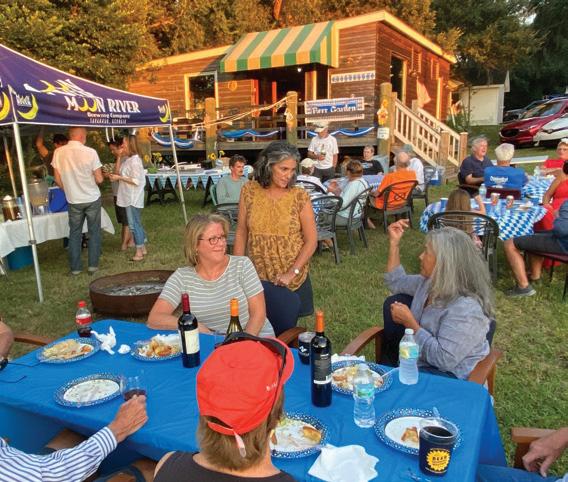
Left: Members use salvaged materials to build their clubhouse.
Finished and being enjoyed!
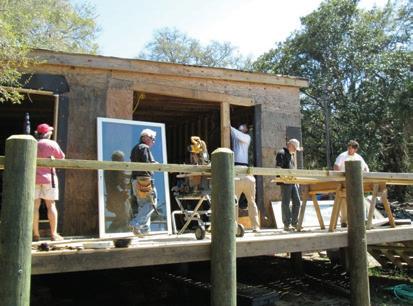 Below:
Below:
Top image: Most of the founding members. From left, Leo Peloquin, Amy Thurman, Chris Weaver, Mike Reynolds. Inset: Chris Davis. The group photo was taken at the January 2010 oyster roast and membership drive, and the inset photo was taken at the Savannah Cup party that fall.
Left: The Club's first "Small Boat Day" in September 2010.

Below left: Sail and power boats rafted up at a previous Summer Sailstice.
You can see more photos at the Chatham Sailing Club Facebook page and website (info below).
Current Board Commodore: Hillary Jones

Vice Commodore: Connie Polk
Purser: Ed Dixon
Membership & Outreach Chair: Kelly Quinn
Race Committee Chair: Rob Meechem

Scribe: Frankie Kelley
Education Chair: Angela Margolit
Social Event Co-Chairs: Lilli Hutto & Shirley Street
Previous Commodore: Ed Owens
Board Members at Large: Charlotte Dixon & Joe Bonds
Chatham Sailing Club
218B Wilmington Island Road (at Young’s Marina)
www.chathamsailingclub.org
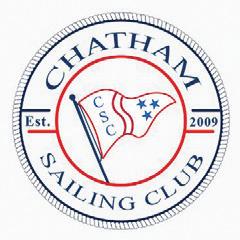
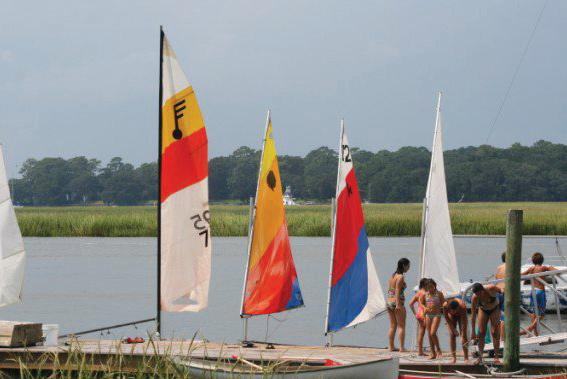
www.facebook.com/chathamsailing
For general information email Charlotte Dixon cdixon604@aol.com
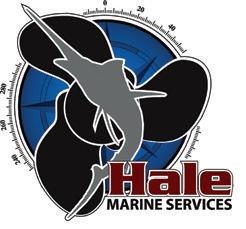




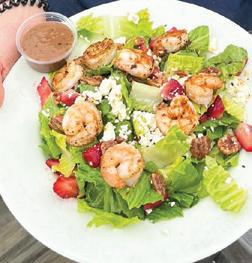







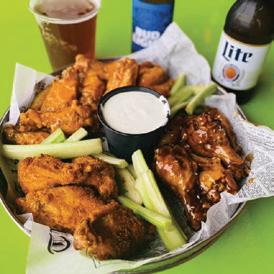











Summer is here and boating season is in full swing. As a community, Coastal Georgia loves spending time on the water. Memorial Health Dwaine & Cynthia Willett Children’s Hospital of Savannah and Safe Kids Savannah want to help keep you and your family safe by reminding boaters to wear a life jacket and providing “free-to-borrow” life jackets at loaner stations at a variety of boat ramps in the region.
In 2022, 85% of boating-related drowning victims were not wearing life jackets. U.S. Coast Guard safety regulations state that as a boater, it is not only your responsibility to safeguard yourself but also to protect your passengers, especially children and inexperienced swimmers. Lead by example for your loved ones and wear a life jacket. Children and teens are 20 times more likely wear a life jacket if an adult is also wearing one (Harborview Injury Prevention & Research Center, 2012).
Since 2008, the Children’s Hospital of Savannah and Safe Kids Savannah have partnered to provide life jacket loaner stations at six boat ramps in Chatham County. These life jacket loaner stations allow people to borrow a life jacket before boating and return it to the station after use. Volunteers and staff check on the stations throughout the year, replenish life jackets and remove from circulation life jackets that are too worn or damaged for safe use. The life jackets are free to borrow and available on a first-come first-served basis. The loaner station signs also provides tips for proper fit and boating safety.

The life jacket loaner program is being expanded through the generous support of a 3-year grant from the U.S. Coast Guard and donations from Safe Kids Worldwide, the Home Depot Foundation, and Sea Tow Foundation. Currently, the Safe Kids Savannah coalition operates life jacket loaner stations across two counties (see sidebar for list).
Volunteers will be working this summer to build new stations at public boating ramps in Liberty and Effingham County. Watch for new loaner stations at the following boat ramps: Liberty County:
• Sunbury
• Riceboro
Effingham County:
• Tuckasee King
• Steel Bridge
• Tommy Long Landing
You can also donate new and gently used U.S. Coast Guard-approved life jackets at the following locations:
• Memorial Health Dwaine & Cynthia Willett Children’s Hospital of Savannah
• Chatham County Aquatic Center
• Chatham, Bryan and Effingham County fire departments
• Bass Pro Shops
Safe Kids Savannah’s mission is to prevent childhood injuries through education, awareness, advocacy, and distribution of safety resources and equipment. Helping keep their kids safe at home, at play, and on the way! Safe
Kids Savannah is one of 400 coalitions in the United States dedicated to preventing major childhood injuries. Preventable
injuries are a leading cause of death for children. Our coalition primarily serves the southeast Georgia counties including Chatham, Bryan, Effingham, Liberty, and Bulloch. If you are interested in volunteering, contact Jenna Morris for additional information: jenna.morris@ hcahealthcare.com.
Chatham County Boat Ramps: Turners Creek
Thunderbolt
Salt Creek Kings Ferry
Bells Landing
Houlihan Bridge
Rodney J. Hall Boat Ramps
Bryan County Locations: Fort McAllister
Fish Tales Marina
Demeries Creek
Morgan’s Ferry
Stations coming soon in Liberty and Effingham Counties

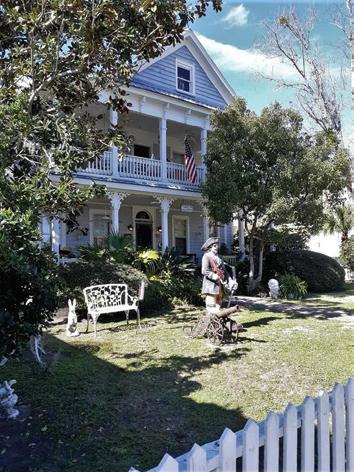


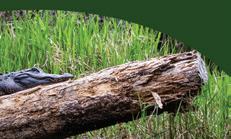
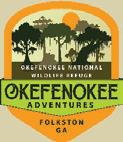






Join St. Mary’s Riverkeeper and guest expert Dr. Adam Fox from UGA Warnell School of Forestry and Natural Resources for a virtual Lunch and Learn on June 28. Dr. Fox will discuss the sturgeon population in the St. Marys River including how water withdrawal from the proposed mining operation may impact the future of this endangered species. Learn more and register for this free webinar. https://www.stmarysriverkeeper.org/advocacy-webinars/
Compiled by Meaghan Gerard Communications & Administrative Director Ogeechee Riverkeeper



meaghan@ogeecheeriverkeeper.org
Damon Mullis, executive director and riverkeeper at Ogeechee Riverkeeper (ORK), and Checo ColonGaud, Ph.D., professor & associate dean of the Jack N. Averitt College of Graduate Studies at Georgia Southern University and ORK board member, published their findings on various methods for collecting macroinvertebrates. The findings of this article were first published in the Journal for Freshwater Ecology. The article, "Fishing for River Critters: the Importance of Wood as Bait." was edited and repurposed for young readers and their educators, and was published by Frontiers for Young Minds. Read the article here: www.ogeecheeriverkeeper.org/ogeechee-riverkeeper-contributes-to-scientificpaper/
ARK staff and volunteers canvassed the creeks of McIntosh County in search of blooming iris. A rare variety of iris was re-discovered growing along stream banks in McIntosh in Spring of 2022. This species of wild Louisiana Iris was thought to have disappeared from the area, with only one record of its occurrence in McIntosh Co in 1930. ARK spent much of April identifying and mapping blooms. Funding is needed for a complete genetic and population analysis to be conducted to confirm this species’ significance. To become a volunteer water quality monitor, contact Maggie@ altamahariverkeeper.org or 912-223-6073.

Hurricane season runs from June 1 through November 30. We’ll take a look at last year, what might be in store for 2023, and the factors driving this uncertain season.
Remember, regardless of what’s predicted for the season, you should prepare for the worst. Coastal Georgia has been lucky since 2016 when Tropical Storm Hermine came through in early September, followed just a month later by Hurricane Matthew, which spun up the Georgia coastline about 50 miles offshore as a Category 2 storm. It only takes one storm to make this a bad hurricane season.
All three agencies Southern Tides follows for hurricane season forecasting predicted a higher than average season in 2022, due to the continuing La Nina and warmer than average waters in the Caribbean. However, the season finished with average numbers: 14 named storms, eight hurricanes and two major hurricanes. It was the first time since 2015 that actual named storms didn’t exceed season predictions.
Two hurricanes made landfall on the continental U.S. Hurricane Ian in Cayo Costa, Florida, on September 28 as a Category 4 storm, and again in Georgetown, S.C., on September 30 as a Category 1. Hurricane Nicole made landfall in Vero Beach, Fla., on November 10 as a Category 1 storm. Although both of those storms impacted coastal Georgia with high winds, rain, and some flooding, Ian was far enough east and Nicole far enough west that we didn’t sustain major damage in either case.
Hurricane Fiona made landfall and caused significant damage in Puerto Rico, Dominican Republic and Grand Turk before turning north.
Both Ian and Fiona were retired from the list of hurricane names due to the levels of damage and deaths caused by these storms. Idris and Farrah will take those spots in 2028, when the names roll around again.
Named 12 - 17 15 11 - 15
Hurricanes 5 - 9 7 6 - 8
Major 1 - 4 3 2 - 3
Arlene
Storm names repeat every six years, though the names of storms resulting in high death numbers or excessive damages are retired. This year, Harold, Idalia, Margot and Nigel, replace Harvey, Irma, Marie and Nick from 2017. If more than 21 named storms occur in the season, the Greek Alphabet will be used.
The 2022 season track map. To see a larger version visit: www.nhc.noaa.gov/data/tracks/ tracks-at-2022.png
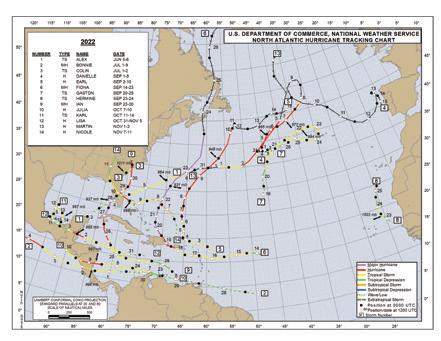
Map provided by NOAA
The overall expectation by most forecasters is that this will be an average to slightly above-average season, but all are careful to clarify that a lot remains uncertain this year.
We have been in La Niña since 2020 (when there were a record 30 named storms and 13 hurricanes), but NOAA’s Climate Prediction Center (CPC) announced that we have entered an ENSO-neutral phase as of June 1. However, there is a 93% chance an El Niño will emerge late in the summer, though it remains uncertain when, or if this might impact peak hurricane season, in August through October.
While El Niño could lead to a quieter season, competing factors could counter this. Sea surface temperatures across the Atlantic basin and in the Caribbean are warmer than usual, which can feed hurricane growth. In addition, there’s potential for an above-normal west African monsoon, which produces African easterly waves and seeds some of the stronger and longer-lived Atlantic storms, according to NOAA.
What about where potential storms might make landfall?
Accuweather senior meteorologist Dan Kottlowski stated, “Based on climatology and an evolving El Niño pattern during August through October, the highest chance for direct and significant impacts will be from the Florida Panhandle around the entire state of Florida to the Carolina coast.”
Other agencies have suggested that the Gulf states might have an easier season, while the East Coast might see more activity. However, Colorado State University’s Tropical Weather and Climate Research Department, highly respected in the field, offers more specific information. Each year CSU publishes impact probabilities by state and county. Last year, Georgia had an 86% chance of being impacted by a named storm, a 51% chance of being impacted by a hurricane, and a 12% chance of being impacted by a major hurricane. Georgia was impacted by both Ian and Nicole.
This year, Georgia’s impact probabilities are 63% for a named storm, 30% for a hurricane, and only 6% for a major hurricane. While significantly lower than last year, these numbers are still far from zero.
Regardless of what’s forecasted, we live in hurricane zone and it’s imperative that we all be prepared for whatever nature sends our way.
Threats from hurricanes can include strong winds (downed trees, downed power lines, damage to your home), storm surge, flooding from excessive rain, and tornadoes.
BEGIN PREPARATIONS NOW:
• Determine where you'll evacuate and plan multiple routes
• Check your home, vehicle, & boat insurance coverage, make changes if needed
• Create a home inventory & take photos of valuables
• Scan and make copies of all important documents (insurance, legal, financial, medical)
• Make repairs to your home (roof leaks, unstable steps, rails, etc.)
• Inspect trees for poor health or dangerous limbs; remove as necessary
• Service your generator or consider purchasing one
• Plan for your pets - supplies, records, pet-friendly evacuation sites
• Have a plan for your boat - check with your marina now
• Plan for what you'll do with family heirlooms
• Begin stocking up, a little at a time, on emergency supplies.
SUPPLY LIST:
Tropical Storm (not part of Saffir-Simpson)
Sustained winds of 39 – 73 mph
Category 1
Sustained winds of 74 – 95 mph
Category 2
Sustained winds of 96 – 110 mph
Category 3 (major)
Sustained winds of 111 – 129 mph
Category 4 (major)
Sustained winds of 130 – 156 mph
Category 5 (major)
Sustained winds of 157 mph or higher
Moringside Drive on Wilmington Island was without power for more than a week after hurricane Matthew in 2016.
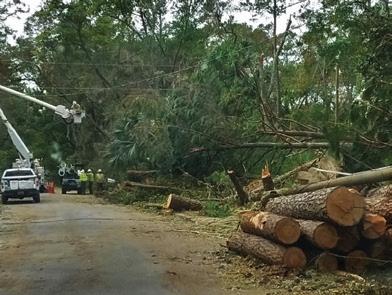
With supply chain issues being what they are, and how quickly store shelves clear at the first sign of bad weather, it's important to begin now or you may find yourself doing without in the event of a storm. Adjust as needed for evacuation or sheltering in place.
• Water for drinking, pets, and hygiene
• Food for all household members and pets
• Medications, first aid kit and any special health needs
• Generator fuel and fuel stabilizer
• Flashlights, camping lanterns and batteries (avoid candles if possible)
• Box or floor fans
• Hand tools, gloves, safety glasses
• Things to do - books, games, cards, pet toys, etc.
• Cash (ATMs won't work without power)
• Keep your vehicle's gas tank at least half-full during storm season
This is a starting point only, not a complete list. Begin your own plans now so you'll be ready later.
• Leave prior to an evacuation order if at all possible.
• If you live in a mobile home, evacuate, no matter what.
• Never drive on flooded roads or walk through flood water.
• Keep a close eye out for downed power lines at all times.
• Stay away from windows and doors when wind speeds increase.
• Do not use candles or other sources of open flame for light when the power is out.
• Discard any refrigerated food that is questionable after a power outage; assume all food that was touched by flood waters is contaminated and discard it.
• Don’t allow your pets to eat or drink anything found outside after a storm.
• Do not drink tap water during or after a storm until water restrictions have been lifted.
• Do not attempt to re-enter an evacuation zone until restrictions have been lifted.
• Attempt to help anyone in need, but do not move injured persons.
• Monitor local weather for tornado warnings and storm updates.
• Do not operate a generator indoors or near open windows and doors.
• Do not attempt to connect a generator directly to your electrical panel.
• Turn off items that draw a lot of power (such as air conditioners) before power goes out.
• Use caution when operating a chain saw, hand saw, or ax to remove debris.
• Do not use a grill indoors.
• Stay hydrated and take care not to get overheated during clean-up.
• Wear gloves, boots, and sunscreen during clean-up.
OTHER HELPFUL LINKS:
Hurricane tracking: www.nhc.noaa.gov/cyclones/
Evacuation routes: www.dot.ga.gov/GDOT/Pages/Hurricane.aspx
Pet friendly hotels: www.pet-friendly-hotels.net
Chatham www.chathamemergency.org/ Bryan bit.ly/BryanCo_EMA
Liberty www.libertycountyga.com/244/EmergencyManagement
McIntosh www.mcintoshema.com/ Glynn bit.ly/GlynnCo_EMA
Camden www.camdencountyga.gov/81/EmergencyManagement
Red Cross shelters: rdcrss.org/461D2im
Georgia Hurricane Guide: bit.ly/GA_HurricaneGuide



Fed. Recovery Assistance: www.disasterassistance.gov/ Stay
 Photo by Amy Thurman
Photo by Amy Thurman
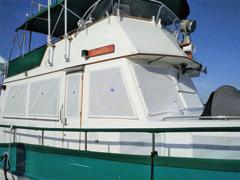

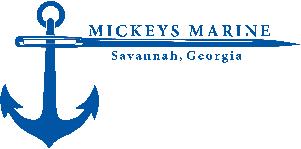



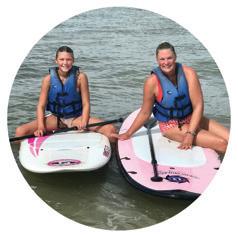

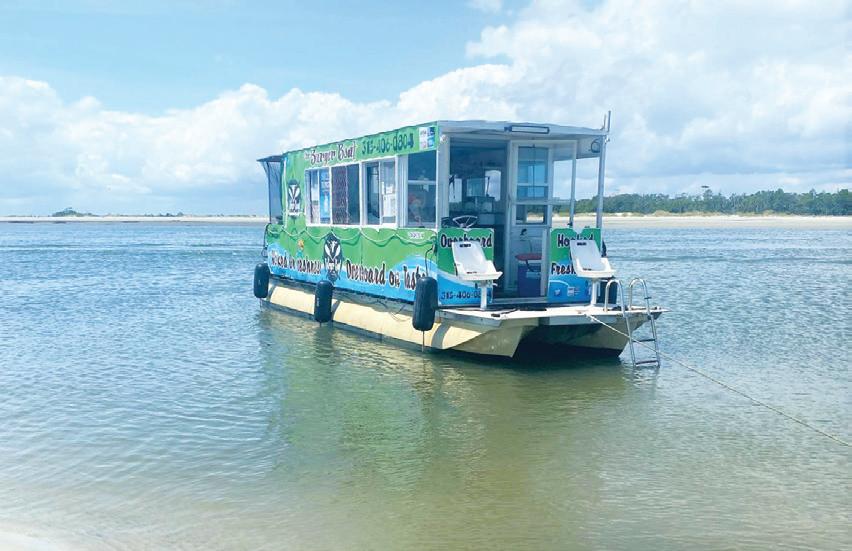

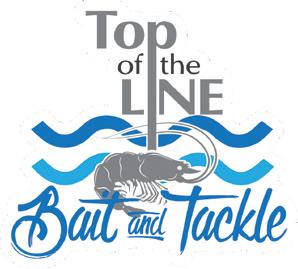

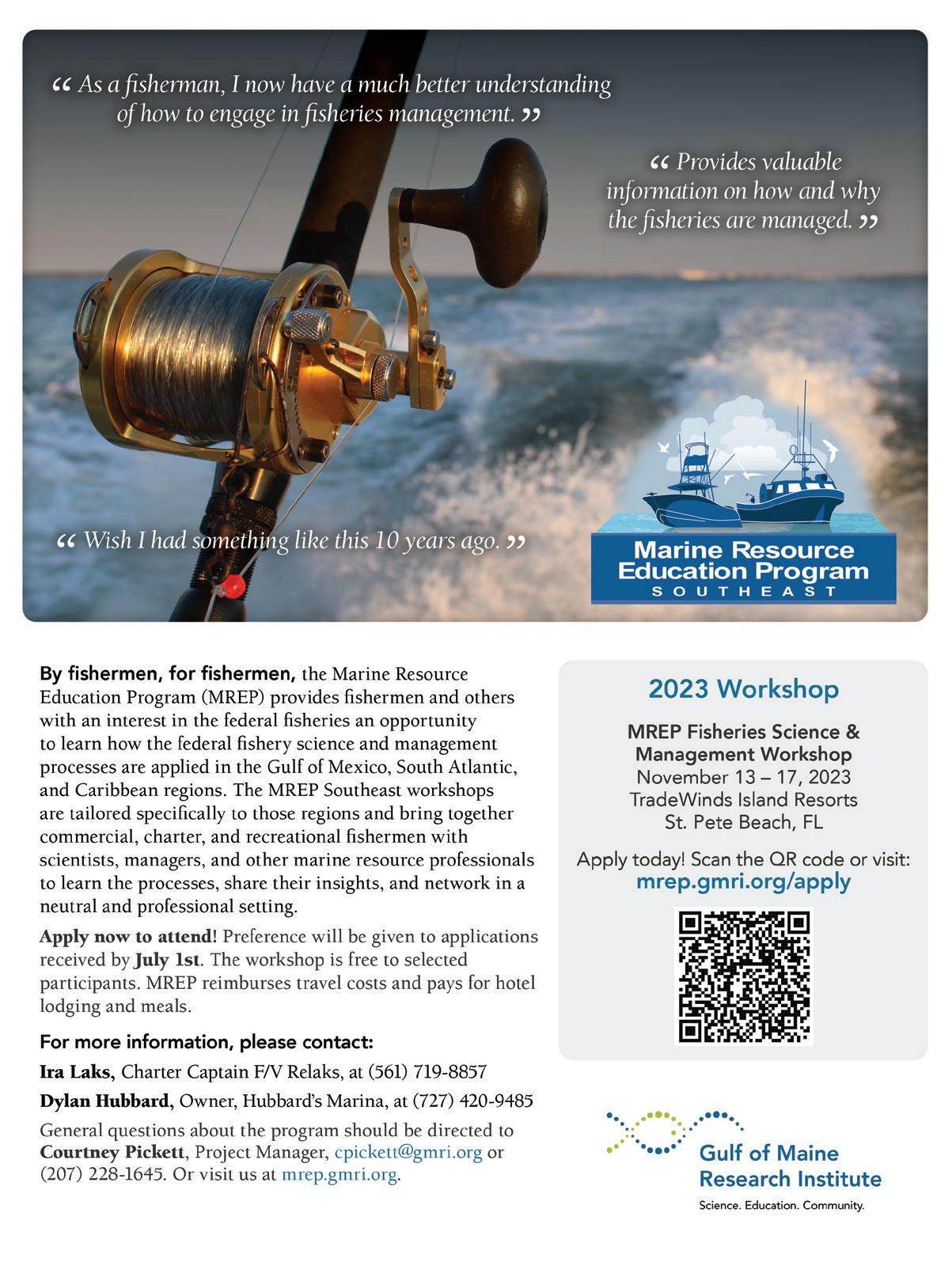
Good day once again, dear readers!
So, are you ready to become a boat captain or set up your own charter business and rule the waves?
“My buddy so-and-so is buying a 50-foot boat and plans to run charters up and down the coast.”
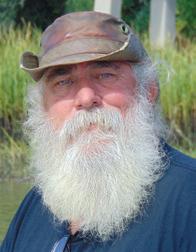
“I got a great deal on a sportfish and I am going to start running offshore charters.”
I hear comments like these on a regular basis, either first hand or second hand from a friend of a friend. I always want to be helpful to up-and-coming captains and I always try to share some of the hurdles and pitfalls that abound in our industry.
Generally, I’ll open with, “Do you currently hold a U.S. Coast Guard rating or license, either OUPV (6-pack) or Masters?” Most people realize they need some sort of credentials, but amazingly enough some do not. Then I’ll ask about on-water experience and that sort of thing. I touch on this subject from time to time in my column because I think there’s room in the area for anyone who wants to operate a legitimate boat business.
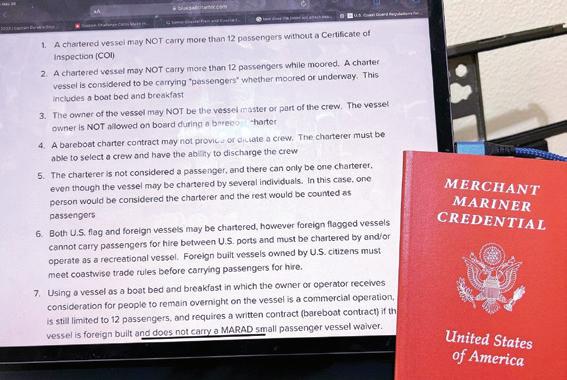
Some time back I was approached by a gentleman I was acquainted with who worked for a competing business. He asked if I would help him go through his paperwork before he sent it in to the Maritime Center for processing. I told him sure, stop on by the house; all went well, and a few months latter he had his license. We stayed in touch and we exchange info on the water that will make the experience better for all of our passengers. Fast forward several months, and the company he worked for went out of business and he came onboard as an asset to the company I work for.
Credentials for ratings is sometimes the easy part. I find many don’t understand the whole COI, or certificate of inspection thing. Which for me is one of the first fundamentals you, as a potential boat business owner, need to know. I sometimes see businesses advertising charters (sunset, eco, fishing, general boat ride) offering to take up to eight or nine passengers. Which, to the average person, may not seem odd – but definitely is odd to licensed captains. An OUPV (6-pack) license can carry up to six passengers and is not an inspected boat (therefore does not have a COI). From there it will step up in numbers based on the design and stability tests of the vessel. Some boats will hold a COI of say 20, with a mate and master, both aboard, but will only be allowed to carry 12 or less with master only, if they can competently display ability to conduct man overboard procedures. That may be the case for
a business that will only take eight or nine passengers; they may have decided this number would be the most comfortable.
However, what I often find is a case of confusion between what the USCG placard from the manufacturer puts on the vessel and limits in a USCG issued COI. For example, I had a 28-foot pontoon I ran to ferry people to and from Daufuskie Island. I operated this as a 6-pack boat. The manufacturer placard said I could carry up to 21 people if memory serves, but the number was way higher than I would have even considered. It could have carried 12 very safely I feel, but the law was six or less and that’s what I did. Don’t skirt the laws people, can you do it and get away with it? Maybe. Right up till you get caught, or worse get someone hurt or killed.
Is there any way to get around it so I can make money with my boat? There are options, and I’ll go into greater detail in next month’s column. For now our time has come to a close.
'Til our wakes cross again, peace and love, and shrimp and grits. I'll see you on the water!
Captain Gator has spent the past several decades truly living the salt life, from living on and racing sailboats, to being a paddle guide, to becoming a 100-ton master and working in the tour boat industry. A strong love of history and the water has shaped him into becoming one part educator, one part entertainer, and one part storyteller. When asked if he is a native, his reply is yes, by osmosis. TheOriginalCaptainGator@gmail.com




3 Bedroom, 3 Bath, 1050 sq feet.
. Historic Tybee Little Pink Cottage

• Renovated 2015
• Two bedrooms ensuite
• Plenty of sleeping space
• Screened porch
• Pool table
And so much more!
$999,999
For many, owning a beach house is a lifelong dream, and it’s easy to see why. There are many perks of living on the beach, even if only for vacations. Let’s cover a few pros:
• Improved mental health: People who live on or near water face less stress and anxiety and are generally happier. The phenomenon might be partially explained by color psychology. Blues and cool tones, similar to the shades of the ocean, induce serenity.


• Increased vitamin D: Forty-two percent of Americans are vitamin D decient. So long as you protect yourself with sunblock, the sun’s rays are great for boosting vitamin D levels.
• Positive physical health benets: The sea air, full of salt, iodine and magnesium, aids in asthma symptoms, respiratory health, skin issues and allergies.






• Plenty of things to do: There’s always something to do — swimming, beach yoga, surng, dolphin watching and so on. Unless your beach is private, you’ll have many entertainment opportunities right in front of your house, like beach concerts, boardwalks, etc.

• Cutting utility costs: You might be able to cut summer cooling costs and avoid running air conditioning 24/7 by letting the ocean breeze blow through open windows.


• Growing market value: In most cases, the already high property value continues to grow over time, meaning if you ever sell, you should walk away with a prot.









